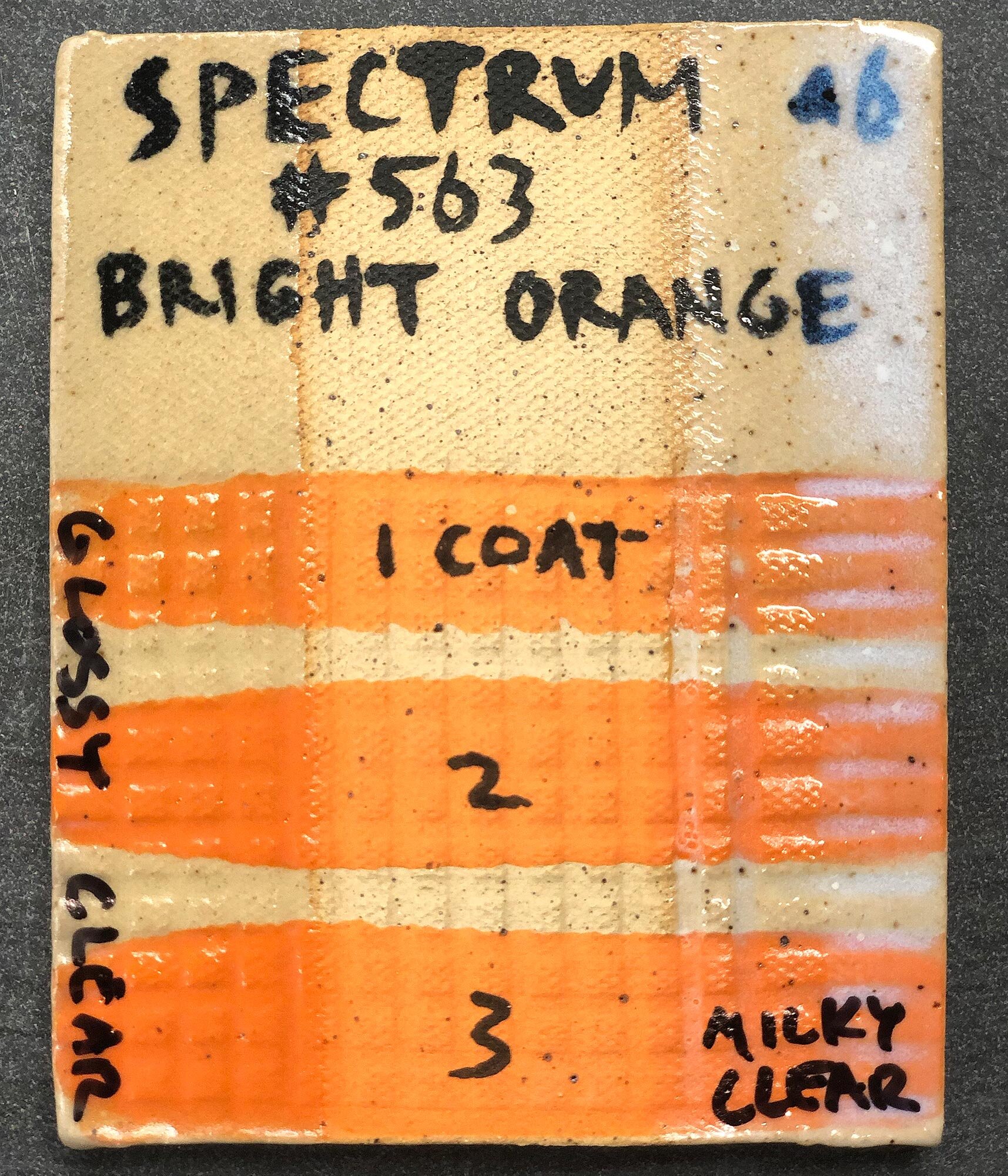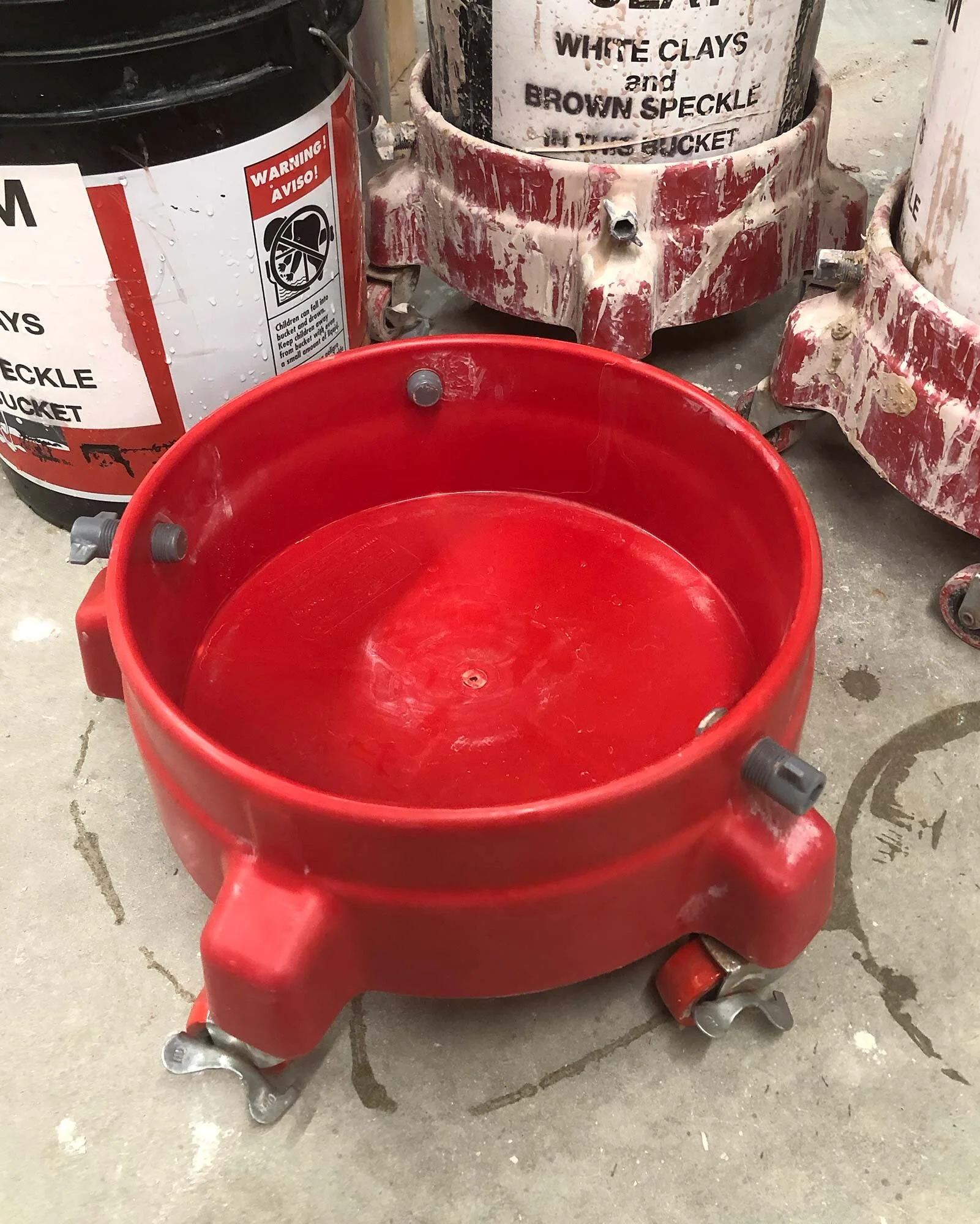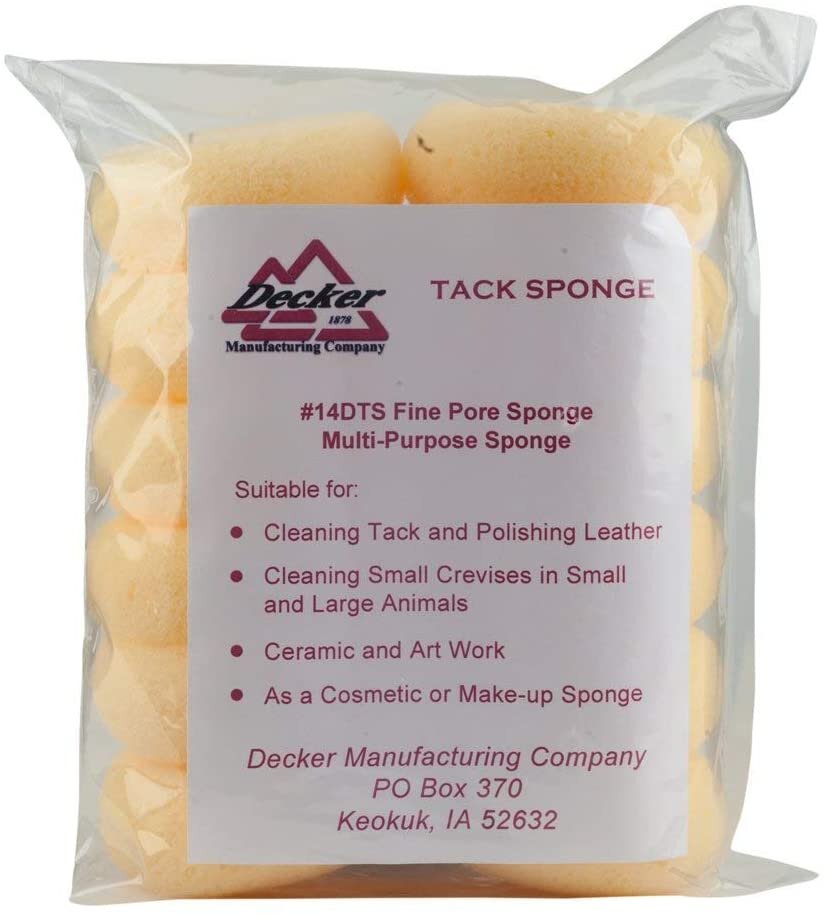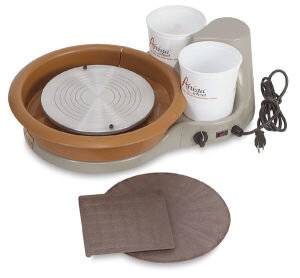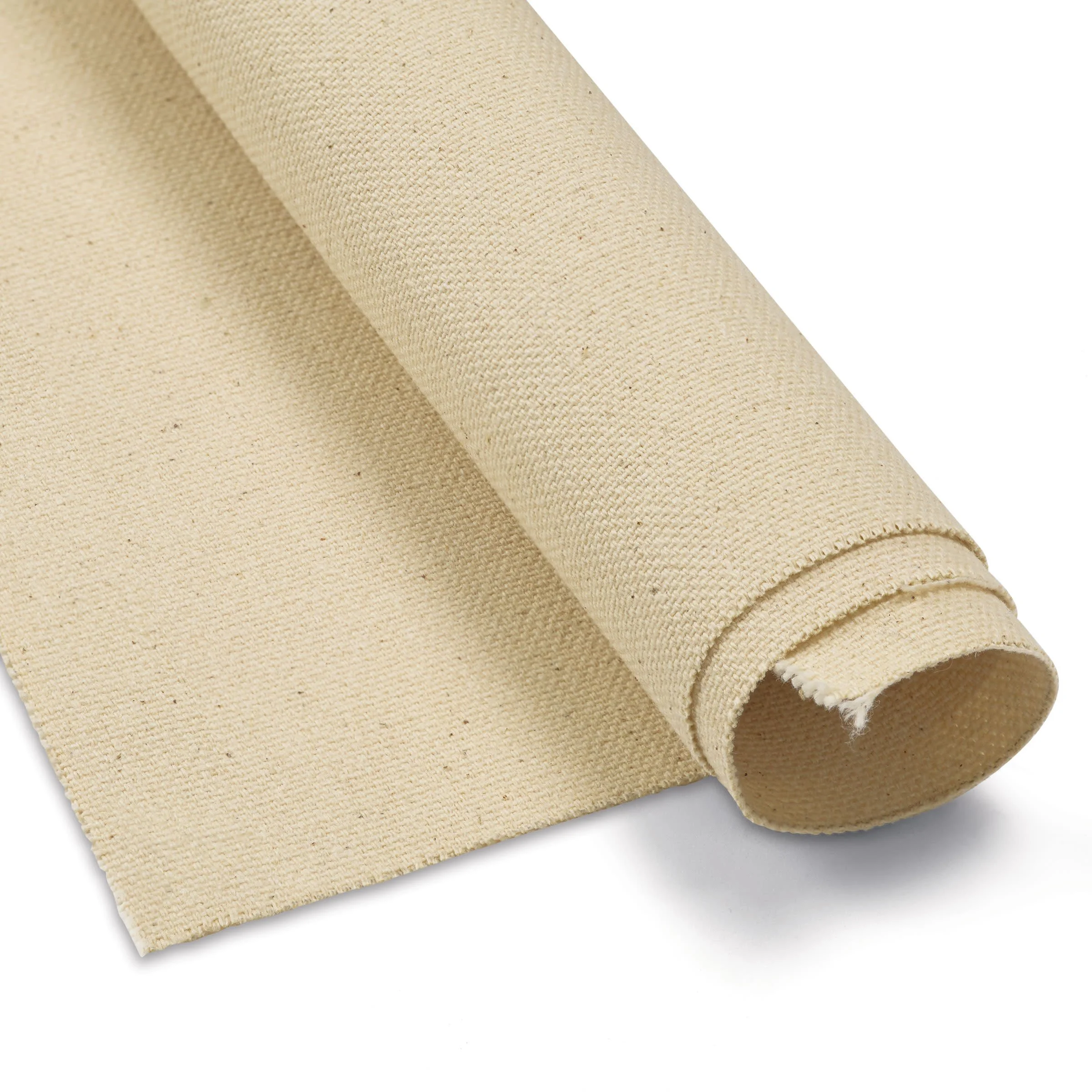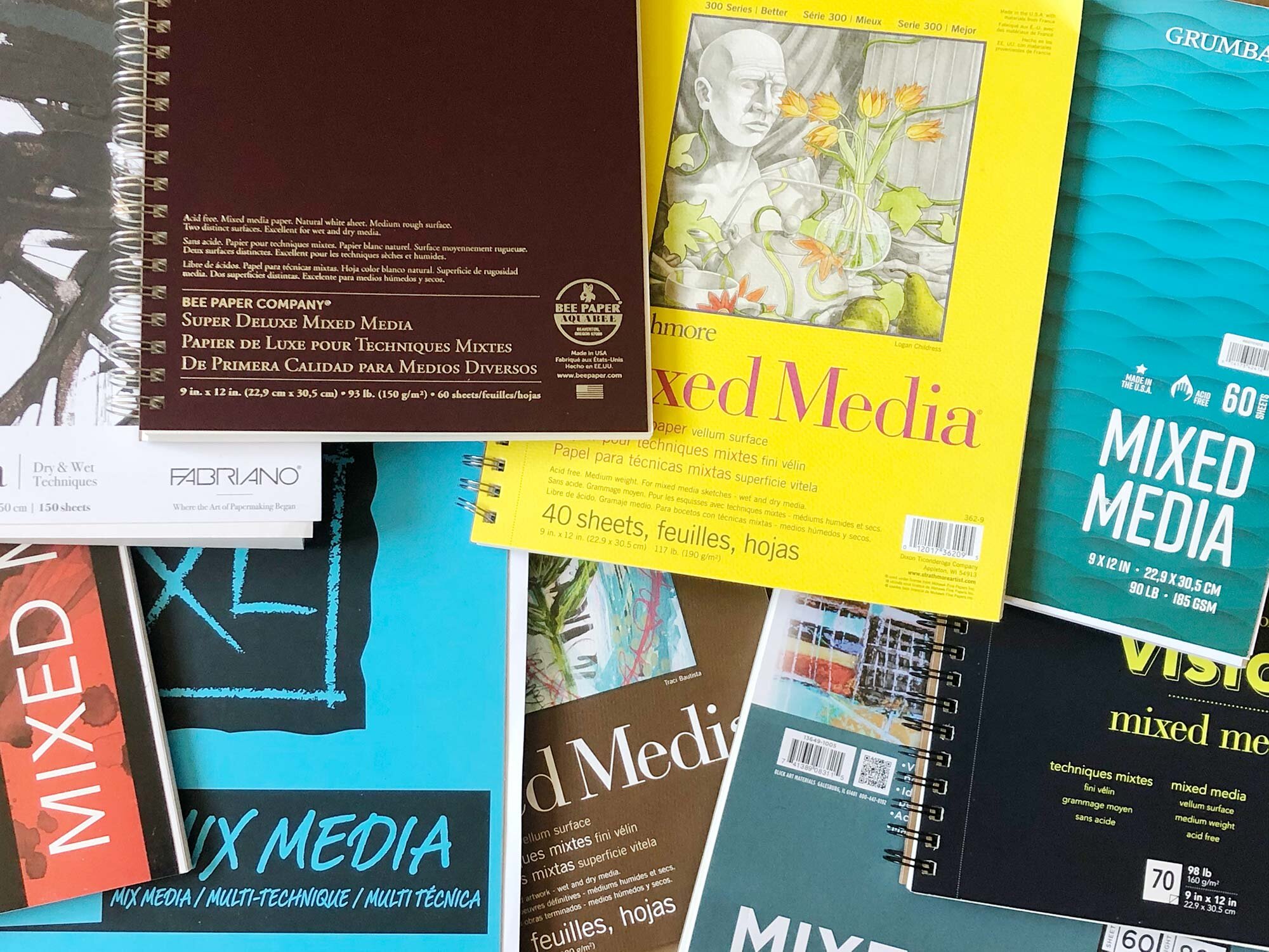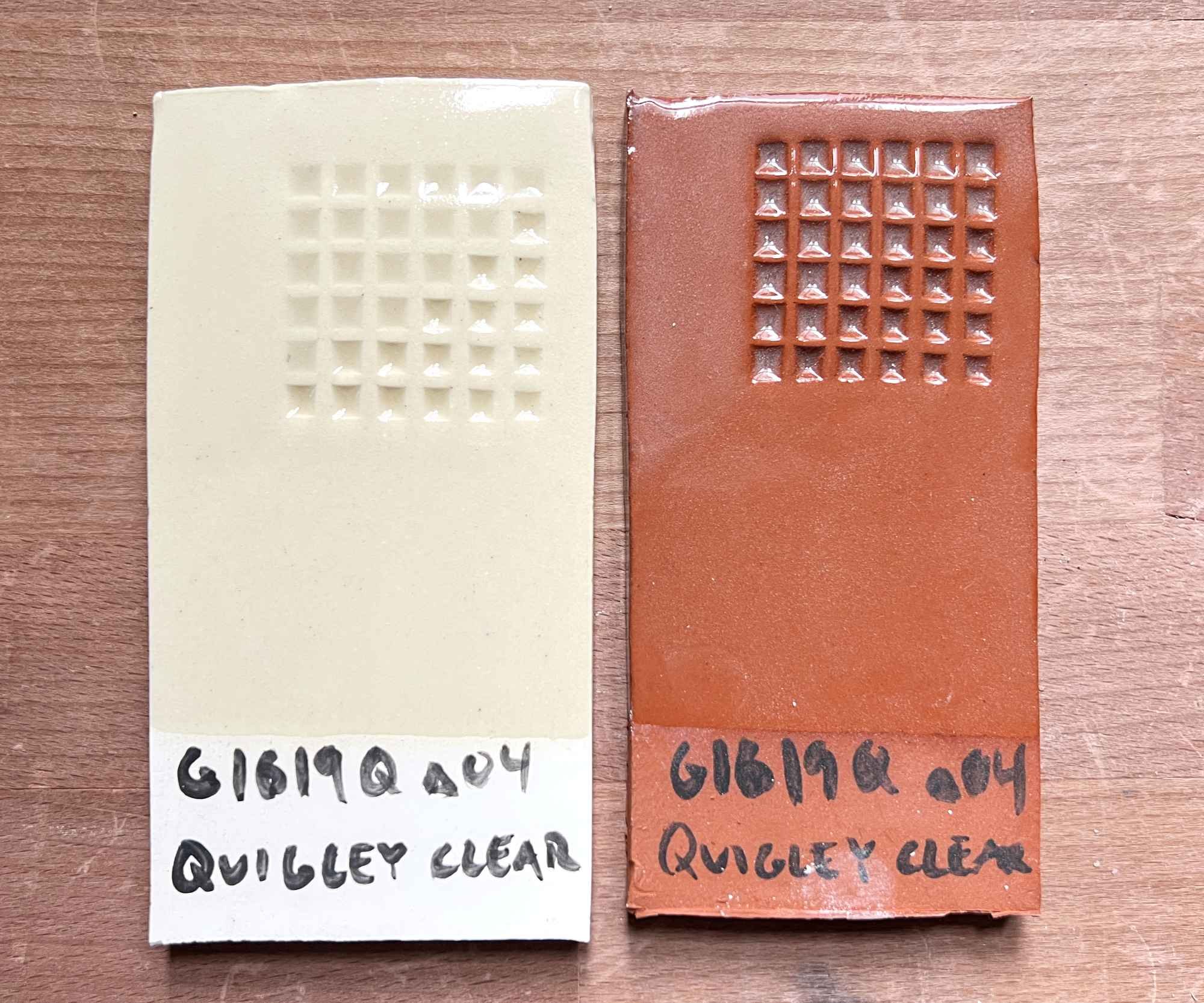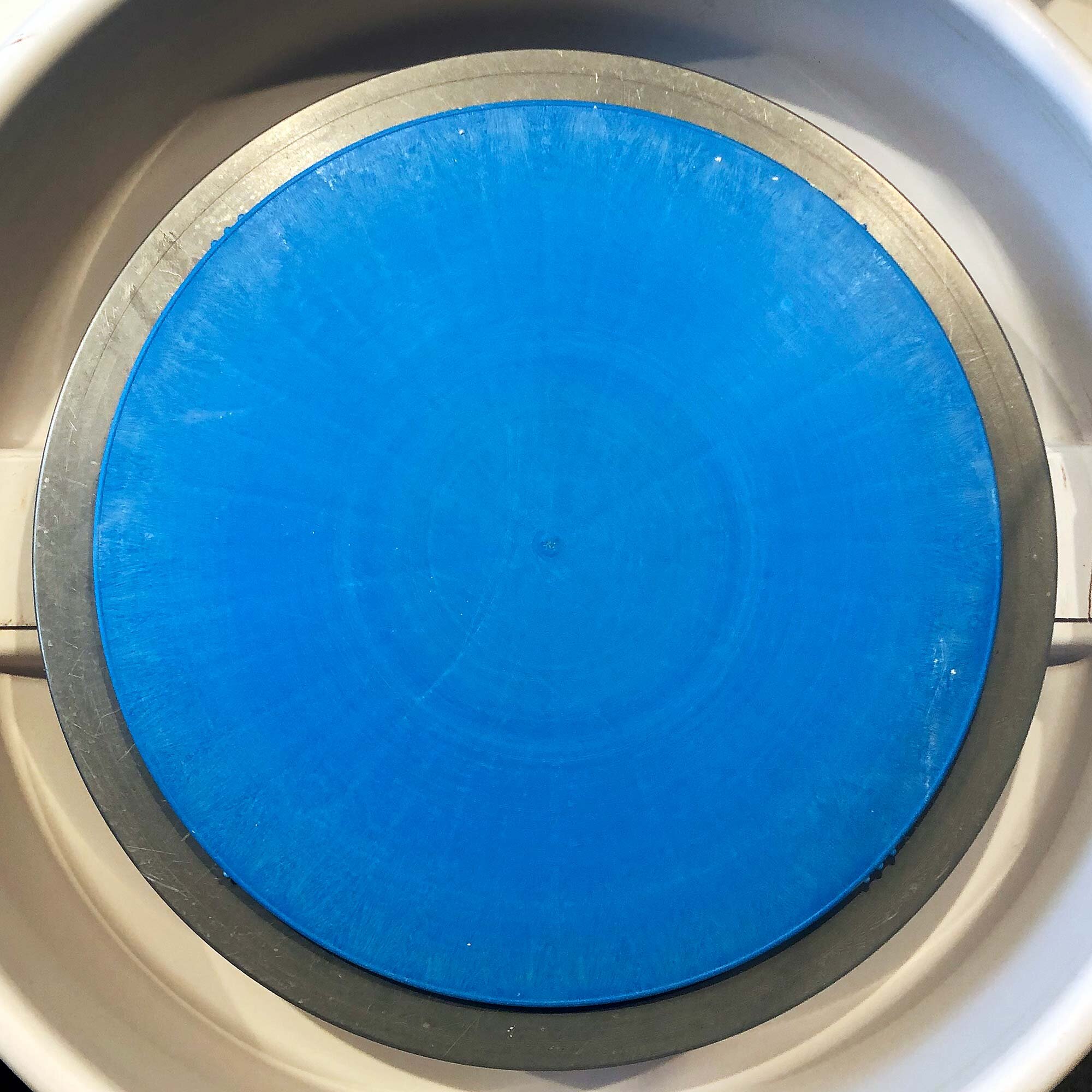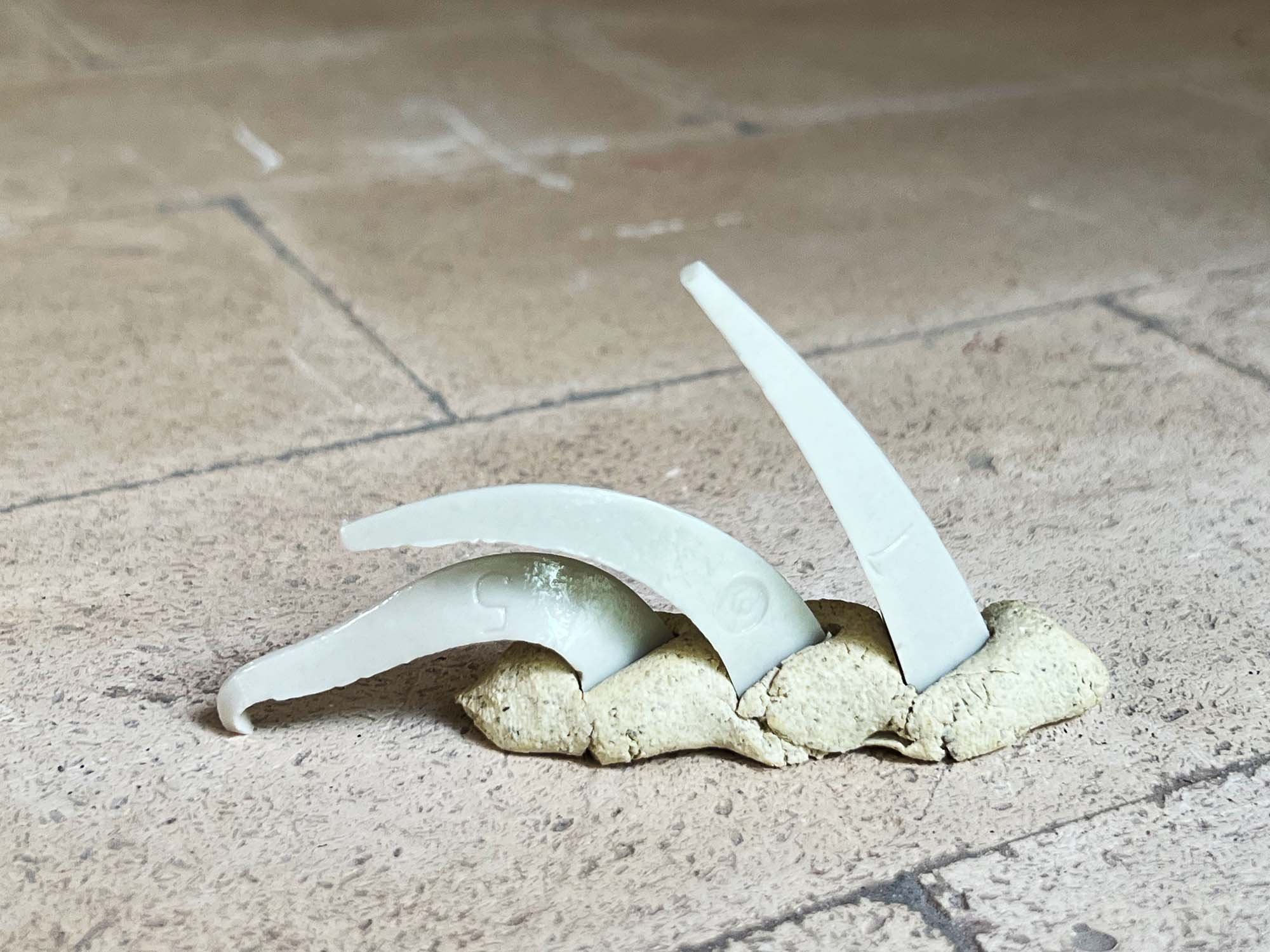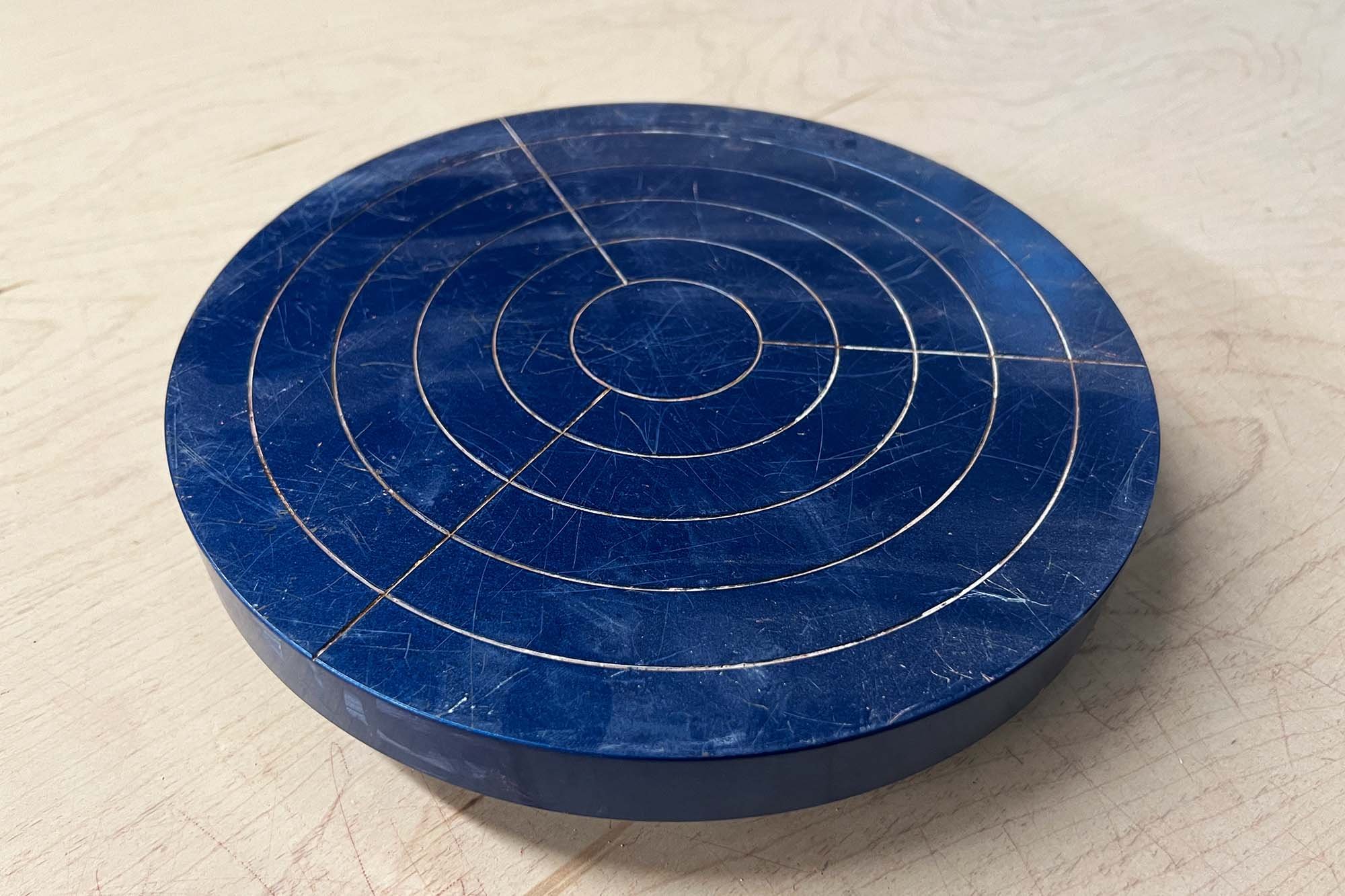Spectrum underglazes are dependable, have great colors, and are economical. I use a few of the Spectrum 500 series, along with a mixture of AMACO Velvet Underglazes, AMACO LUG underglazes. Spectrum has a few colors, such as orange and bright green, that have hues I can’t find in other lines. And they are often waaay cheaper than other underglazes.
Spectrum 500 series underglazes can be color-mixed with other underglazes or slips like paint, and can be applied with a variety of tools including brushes, spray guns, sponges, or really any way you can think to get them to stick. They are also perfect for scraffito, stenciling, marbling, and other decorative techniques.
Spectrum underglazes are available in a variety of sizes, including 2oz, 4oz, and 16oz pints. Expect to pay anywhere from $15 to $20 for a 16oz pint of underglaze, making these some of the most affordable underglazes on the market. The best place to find Spectrum Underglazes are with speciality ceramic suppliers, such as The Ceramic Shop in Philadelphia.
Spectrum 500 series underglazes are designed for cone 05 to cone 6. For best results, test in your kiln first. The following images of Spectrum Underglazes test tiles were fired at Cone 6 in oxidation on a speckled clay body, to illustrate what these colors look like underneath the Glossy Clear and Milky Clear cone 6 mid-range glaze recipes. But they will also work underneath a commercial clear glaze. Try them at high fire too, most colors will stay true. For more information about Spectrum Underglaze, please visit the manufacturer’s site.
Spectrum 500 Series Underglaze Cone 6 Test Tiles
All images show 1, 2, or 3 coats of underglaze painted on a speckled stoneware fired to cone 6 in oxidation. The left side of the tile shows Cone 6 Glossy Clear glaze on top, the middle section is unglazed, and the right side is the underglaze underneath Cone 6 Milky Clear glaze. As commercial underglazes are quite expensive, I like to pair them with economical clear glazes that are mixed from scratch.
Spectrum 513 Mahogany Brown painted in 1, 2, and 3 coats on speckled stoneware and fired to cone 6 in oxidation.
Spectrum 563 Bright Orange painted in 1, 2, and 3 coats on speckled stoneware and fired to cone 6 in oxidation.
Spectrum 564 Bright Green painted in 1, 2, and 3 coats on speckled stoneware and fired to cone 6 in oxidation.
Spectrum 567 Fire Engine Red painted in 1, 2, and 3 coats on speckled stoneware and fired to cone 6 in oxidation.
About Underglazes
Underglazes are the best way to apply saturated, bright colors to your ceramics. Not quite a slip and not quite a glaze, underglazes contain metallic oxides or mason stains to achieve the desired color, and manufacturers generally mix underglazes with some sort of gum material that helps with brushability and getting the material to stick. That versatility allows them to be painted on leather hard greenware, bisqueware, and they will even stick on top of glaze for a refire.
Do you have a favorite underglaze? Let us know in the comments.

